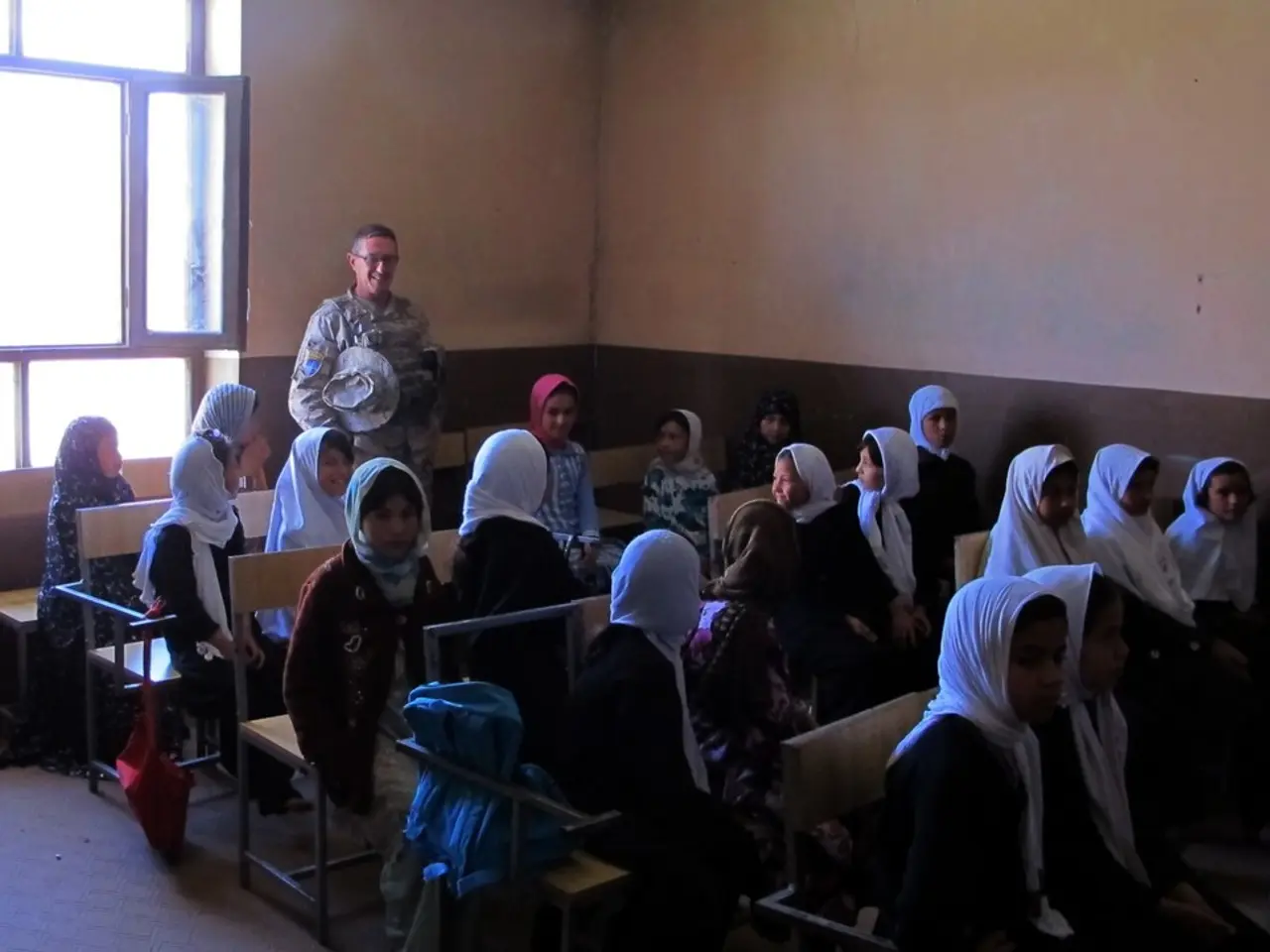Decline in international student arrivals in the US, with a significant impact in Asia observed
The Trump administration's immigration policies had a notable but targeted impact on student visa arrivals to the United States, particularly affecting international students from major source countries like India and China.
During late May, the administration paused interviews for student visas, leading to a temporary halt and reduced issuance of new student visas. This created difficulties for incoming international students, especially those from India and China. The administration also implemented increased scrutiny, resulting in significant backlogs and delays at US embassies and consulates in key Asian markets.
Despite alarming headlines about visa revocations, the actual number of revoked student visas was well under 0.1% of visas issued annually and less than 0.02% of enrolled international students. The impact on the broader student population was limited and focused on specific groups such as student protesters or those considered security risks.
The pause in visa interviews and new restrictions particularly affected Chinese nationals, with reports of student visa revocations and calls from higher education organizations to reconsider these policies to avoid harm to universities and student communities.
In some states and universities, particularly in California, fears of deportation and visa status loss due to executive orders created additional stress and reduced participation among international students under Trump’s second term.
The timing of these policies, during the peak summer visa application season, has been particularly damaging. The declines in student visa arrivals from India and China have resulted in a significant drop, threatening the financial models of US colleges and universities. Officials at schools with large Asian student populations, such as the University of Southern California and Arizona State University, have expressed concerns about potential losses of tens of millions of dollars in revenue due to a continued decline in student arrivals.
In the 2023-2024 school year, a record 1.1 million international students enrolled in US higher education institutions. However, the declines in student visa arrivals are attributed to the Trump administration's immigration policies, which have created bottlenecks and a chilling effect on prospective students.
The largest international education market, Asia, experienced the most significant declines in student visa arrivals. Student arrivals from China decreased by 26% in July, while student arrivals from India decreased by 46% in the same month. Visitor arrivals on student visas in the United States decreased by 28% in July compared to the previous year.
The policy changes and administrative hurdles have created a climate of uncertainty for prospective international students. Zuzana Cepla Wootson, deputy director of federal policy at the Presidents' Alliance on Higher Education and Immigration, stated that the administration's policies create uncertainty for students from China, India, and beyond.
Many students already on student visas may have chosen to stay in the US and not travel this summer due to the administration's scrutiny of international scholars. Arizona State University President Michael Crow stated that visa delays have been more disruptive than the coronavirus (Covid-19) pandemic.
In summary, the Trump administration’s immigration policies created more hurdles and uncertainty in obtaining and maintaining student visas for international students from India and China, but the actual revocation rates were very low and the broader impact was gradual and somewhat limited in scale, primarily affecting new applicants and specific targeted individuals rather than the entire international student body. The potential decrease could cost the US education sector US$2.6 billion in tuition revenue.
Read also:
- Dispute on hunger crisis in Gaza intensifies amongst numerous Jewish-American citizens
- Lucrative Business Opportunities in Nigeria: Discover Profitable Enterprises Immediately
- Carpometacarpal joint osteoarthritis: Characteristics, origins, remedies
- Humanity's Lasting Legacy Could Potentially be Piles of Chicken Remains








